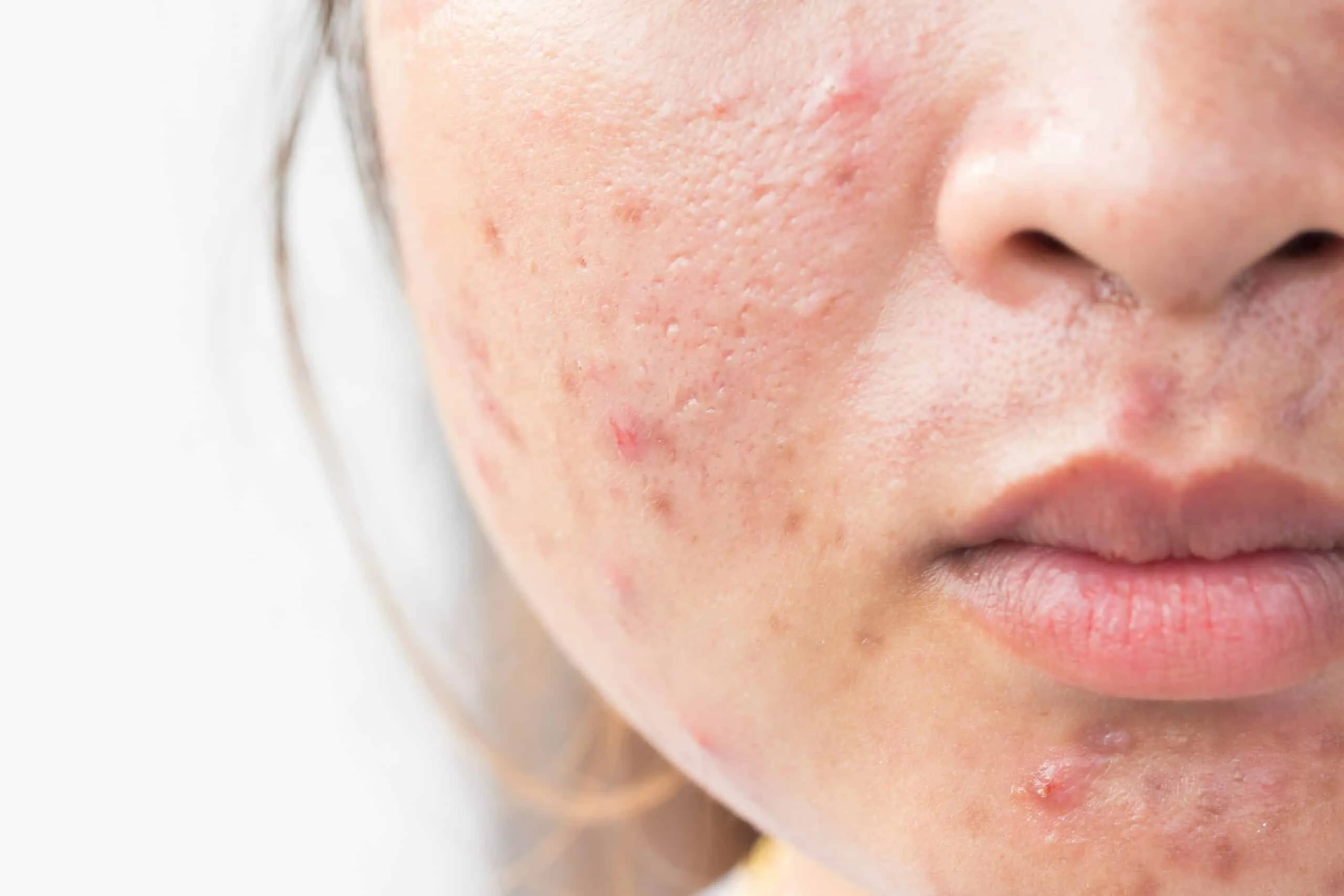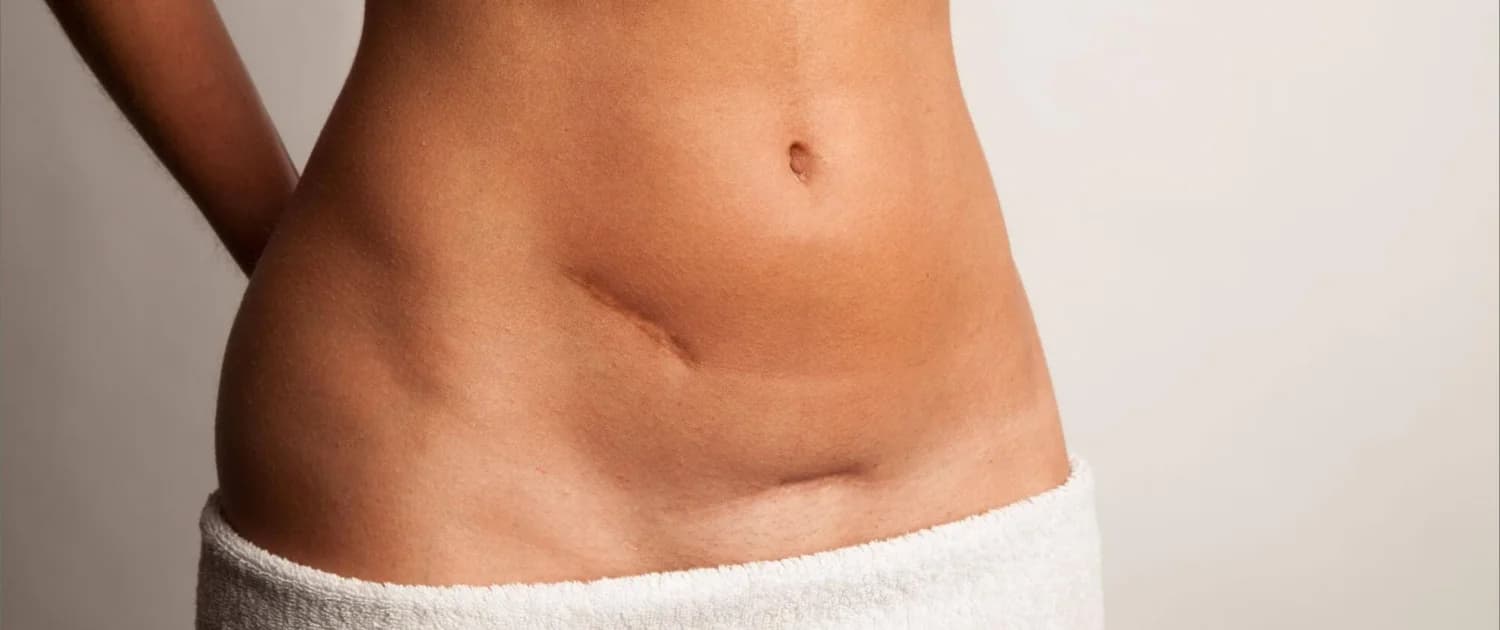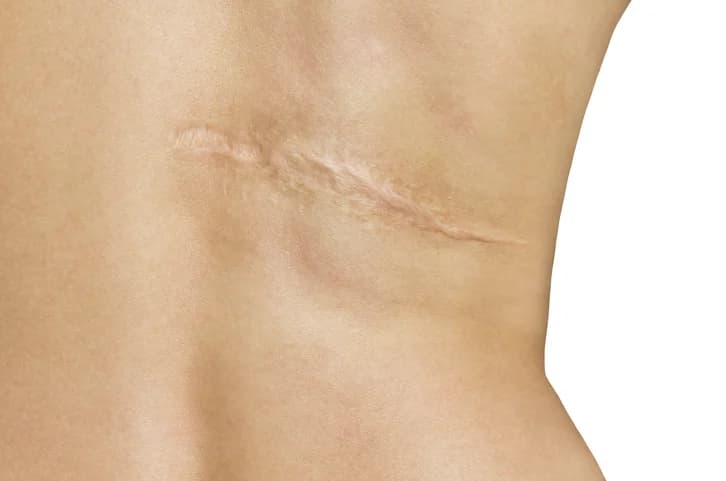Scar formation is your body’s way to heal lost or damaged skin which can happen due to surgery or an accident. However, scars can often be itchy, painful, tight, or thick, limiting your movement. Undergoing scar revision treatment can help improve the appearance of a scar as well as reduce pain and result in softer skin in the area.
Are there different types of scars?
There are many types of scars. They can be thick and raised (hypertrophic scars) or excessively large and lumpy (keloid scars). They may also be flat, discolored, or depressed (sunken beneath the surface of your skin). The type, location, and cause of your scar are important factors in determining the right scar revision treatment for you.

What is scar revision?
Scar revision is the cosmetic or medical treatment used to reduce the appearance of scars. There is a variety of scar revision techniques, ranging from topical skin therapies to scar revision surgery. This treatment aims to make the scar more closely match the color and texture of the surrounding skin. Although it won’t eliminate the scar, some severe scars cause pain and need medical treatment.
Who gets scar revision?
Anyone who has an unwanted scar may consider scar revision. Some common reasons for scarring include:
Acne
Burns, either from accidents or radiation therapy
Cesarean birth (C-section)
Cleft lip repair surgery
Cosmetic or reconstructive surgery
Piercings
Skin infections
Traumatic injuries

Scar removal treatment options
Depending on the scar and the patient’s goals for the treatment, scar removal treatment options may vary. Size, depth, and how old the scar is determines how many sessions and treatments are needed to minimize the scar’s appearance. Different types of treatments may include:
Topical treatments: Compression bandages and gels.
Injectable treatments: Used for concave scars; several injections may be required over time.
Surface treatments: Help by decreasing the appearance of the scar. They may include dermabrasion, laser therapy, chemical peels, or skin bleaching.
Compression garments: By applying pressure they reduce blood flow to the scarred area. This can reduce the thickness and minimize the appearance of your scar.
Silicone sheets: These act like an extra layer of healthy skin on your scar.
Laser therapy:State-of-the-art technology is used to improve the elasticity of skin.
Surgery: may be necessary depending on how complex the scar is.
Natural remedies to get rid of scars
Aloe Vera
Vitamin E
Honey
Coconut oil
Apple cider vinegar
Lavender and olive oil
Lemon
Potato

What are the risks of scar revision?
Depending on the type of scar revision treatment you receive, there may be some risks. If you’ve had topical treatments, they carry the fewest risks which include mild discomfort or skin irritation such as a rash. Injections and resurfacing treatments can lead to redness, swelling, blistering, and increased sensitivity to sunlight. They may also change the color of the scar, making it darker than the surrounding skin. Scar revision surgery tends to carry the most risks, including infection and bleeding. Your scar may return after surgery or the treatment may cause a new scar to form in the spot.
What are the benefits of scar revision?
Treatment can help improve a scar:
Color
Size
Stiffness
Texture
Thickness

What can I expect after scar revision?
The recovery process after scar revision may depend on the type of treatment you choose. Topical treatments provide very slower results, which may take several months or multiple injections. Undergoing scar revision surgery may take weeks or months for final results. It’s also important to keep in mind although scar revision treatments help minimize your scar they will not be completely removed.
Conclusion
In conclusion, there are several effective options for scar removal that cater to different types of scars and individual needs. Treatments such as laser therapy, surgical revision, and dermabrasion have proven effective for many. Topical treatments like silicone sheets and gels can also be beneficial, especially for minor scars. However, it’s important to remember that results can vary greatly depending on the individual and the nature of the scar. Therefore, consulting with a healthcare professional or a dermatologist is crucial to determine the best course of action. While complete scar removal may not always be possible, these treatments can significantly improve the appearance of scars and boost self-confidence.